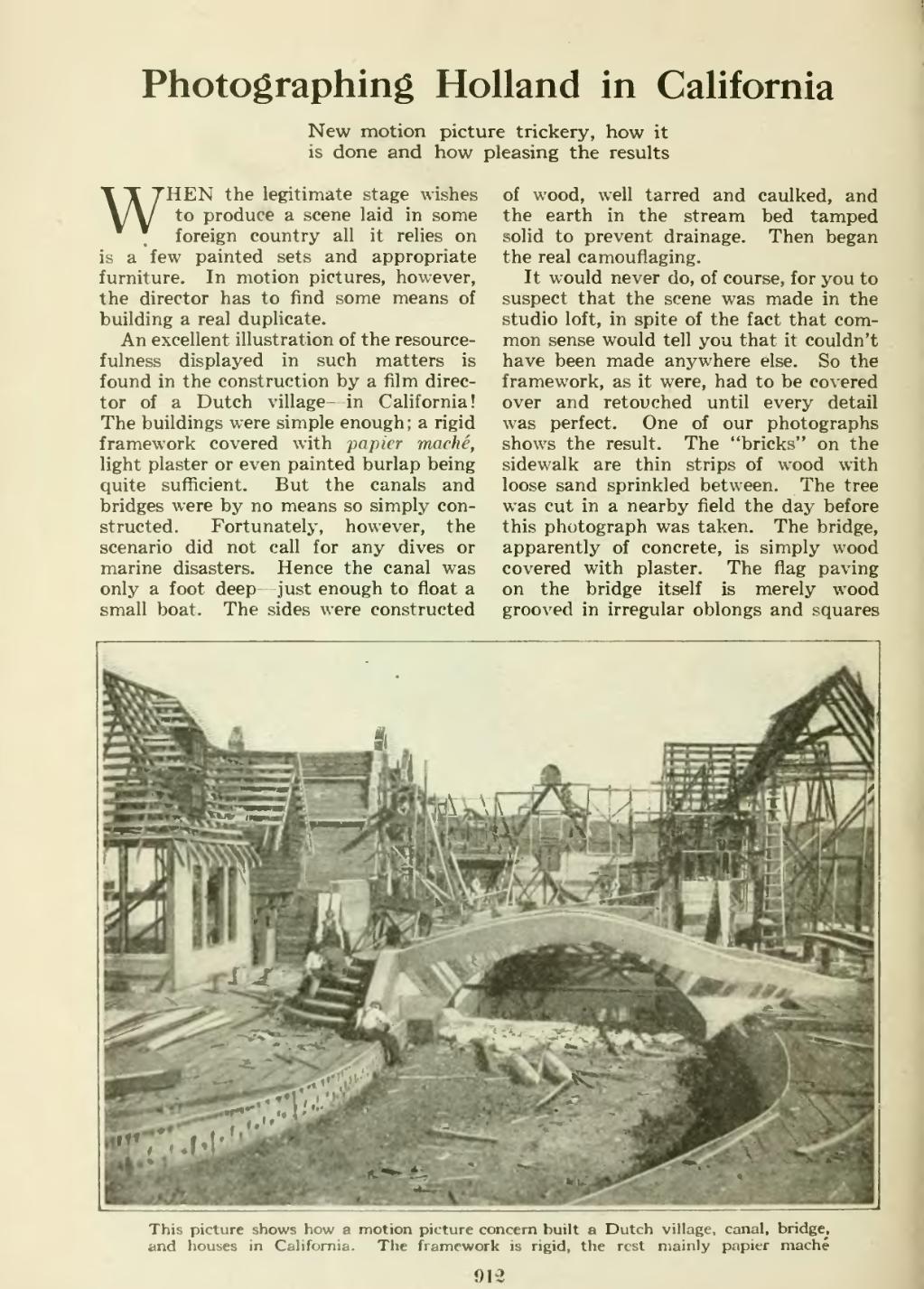Photographing Holland in California
New motion picture trickery, how it is done and how pleasing the results
��WHEN the legitimate stage wishes to produce a scene laid in some foreign country all it relies on is a few painted sets and appropriate furniture. In motion pictures, however, the director has to find some means of building a real duplicate.
An excellent illustration of the resource- fulness displayed in such matters is found in the construction by a film direc- tor of a Dutch village — in California! The buildings were simple enough; a rigid framework covered with papier mache, light plaster or even painted burlap being quite sufficient. But the canals and bridges were by no means so simply con- structed. Fortunately, however, the scenario did not call for any dives or marine disasters. Hence the canal was only a foot deep — just enough to float a small boat. The sides were constructed
��of wood, well tarred and caulked, and the earth in the stream bed tamped solid to prevent drainage. Then began the real camouflaging.
It would never do, of course, for you to suspect that the scene was made in the studio loft, in spite of the fact that com- mon sense would tell you that it couldn't have been made anywhere else. So the framework, as it were, had to be covered over and retouched until every detail was perfect. One of our photographs shows the result. The "bricks" on the sidewalk are thin strips of wood with loose sand sprinkled between. The tree was cut in a nearby field the day before this photograph was taken. The bridge, apparently of concrete, is simply wood covered with plaster. The flag paving on the bridge itself is merely wood grooved in irregular oblongs and squares
���This picture shows In and houses in Cahfoim;
��' tK.ii 1)11 ti HO concern built a Dutch village, canal, bridge, The framework is rigid, the rest mainly papier niache
912
�� �
